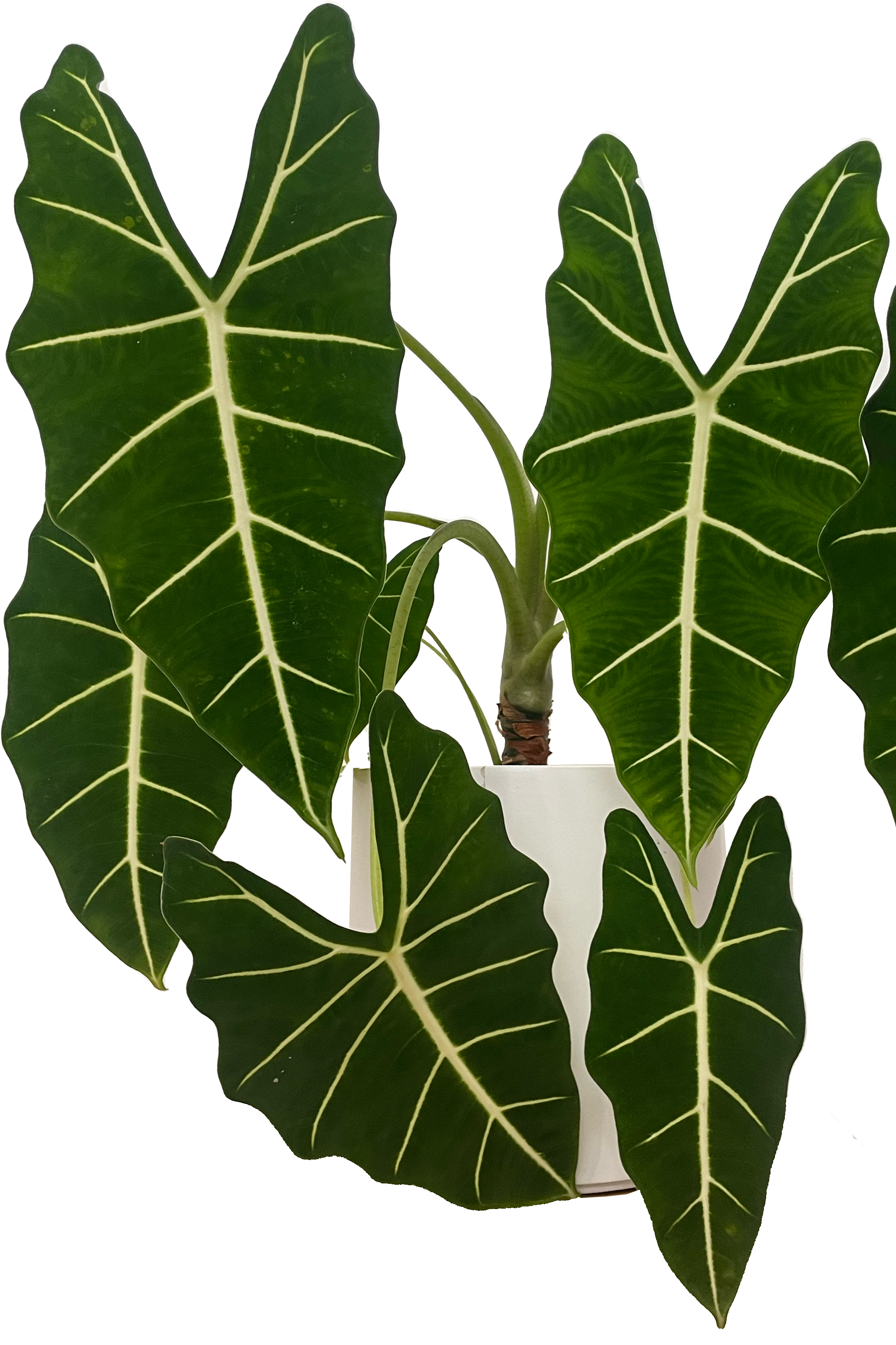
Alocasia Frydek : Tips for Growing and Caring for this Striking Aroid
Are you looking to add a touch of exotic beauty to your indoor garden? Alocasia Frydek is a stunning plant with dark green leaves and striking white veins. This tropical plant can add a touch of the jungle to your living space. In this post, we will guide you through the basics of Alocasia Frydek care to help you keep your plant healthy and thriving.
Plant Background
Alocasia Frydek is native to the rainforests of Southeast Asia, specifically the Philippines. It is well adapted to warm and humid conditions and thrives in temperatures between 60-85°F (15-29°C) with high humidity. The plant grows in well-draining soils and requires adequate water to thrive.
Lighting Requirements
Alocasia Frydek requires bright indirect light, and direct sunlight should be avoided as it can burn the leaves. If you do not have a sunny window, a grow light can be used to provide adequate lighting for the plant. It is important to note that the plant is sensitive to sudden changes in lighting, and you should gradually acclimate it to any new lighting conditions.
Soil and Fertilisation Requirements
Alocasia Frydek thrives in well-draining soil. You can use a mix of peat, perlite, and sand to create a well-draining soil mix. The plant requires fertilisation every two to three weeks during the growing season, which is from spring to summer. You can use a balanced liquid fertiliser, diluted to half the recommended strength, to avoid over-fertilisation.
Watering
Alocasia Frydek requires consistent watering to maintain its health. The plant should be watered when the top inch of soil is dry. It is important to avoid overwatering, as it can lead to root rot. To prevent overwatering, ensure that the soil has good drainage and the pot has drainage holes. Alocasia Frydek also benefits from increased humidity. You can use a humidifier or place a tray of water near the plant to increase the humidity.
Common Pests and Issues
Alocasia Frydek is susceptible to pests such as spider mites, mealybugs, and scale. You can prevent these pests by regularly cleaning the leaves and using insecticidal soap or neem oil. The plant can also suffer from yellowing leaves, which can be a sign of overwatering, insufficient light, or nutrient deficiency. If you notice any of these symptoms, adjust your care routine accordingly.
Repotting
@salijero Quick #alocasia update! They’re both pushing out new leaves. The #alocasia #melo is slowwwwly pushing out its first new leaf in months. And the #frydek is bouncing back nicely after its repot shock! #growing #houseplants #repot ♬ Cloudy Sky - Tundra Beats
@salijero Watch me repot my #alocasia #frydek ♬ original sound - salijero
@salijero 🌱 Repotting update🌱 giving you an update on my #alocasia #frydek ♬ Jungle Vibes - 윤새 (Yunsae)
Propagation
Alocasia Frydek can be propagated through division or stem cuttings. Division is the easiest and most common method. To propagate through division, gently remove the plant from the pot and divide the rhizome into several sections, ensuring that each section has a healthy root system and at least one leaf. You can then plant each division in a separate pot with fresh soil. To propagate through stem cuttings, select a healthy stem with a few leaves and place it in a container with water or moist soil until roots develop. Once the roots have developed, you can plant the cutting in a separate pot with fresh soil. Propagation should be done during the growing season in spring or summer.
In addition to division and stem cuttings, Alocasia Frydek can also be propagated through bulb offsets. When the plant goes dormant in the winter, check the base of the plant for any small offsets growing from the bulb. Gently remove the offsets and plant them in separate pots with fresh soil. It may take a few months for the offsets to develop roots and new leaves, but with proper care, they can grow into healthy plants. Bulb propagation can be a slower process, so it is important to be patient and provide the offsets with the appropriate care and conditions.
Wintering
Alocasia Frydek is a tropical plant that prefers warm temperatures and high humidity, making it challenging to grow outdoors in colder climates. During the winter months, it is recommended to bring the plant indoors to protect it from cold temperatures and low humidity levels. The plant may also enter a dormant phase during the winter, during which it may lose some of its leaves. To encourage healthy growth during the dormant phase, reduce watering and fertilisation and provide the plant with adequate light and humidity levels. You can also place a humidifier or tray of water near the plant to increase the humidity. Once the temperatures begin to warm up in the spring, you can resume regular watering and fertilisation to encourage new growth.
In conclusion, Alocasia Frydek is a striking plant that can add an exotic touch to your home. By following the tips provided in this post, you can keep your plant healthy and thriving. Remember to provide bright indirect light, well-draining soil, consistent watering, and prevent pests to keep your Alocasia Frydek looking its best.